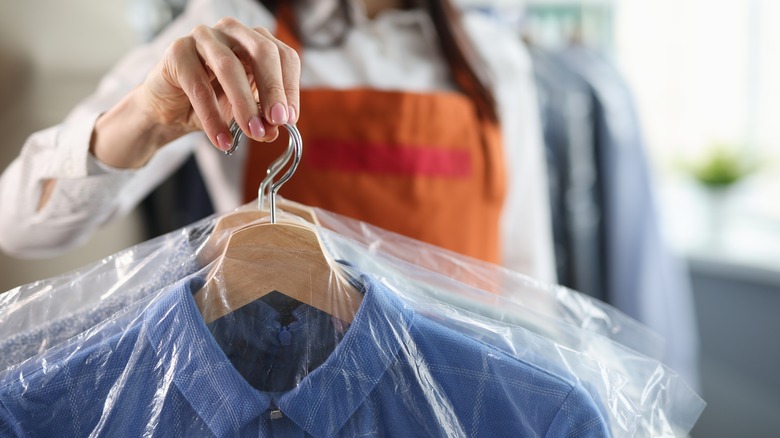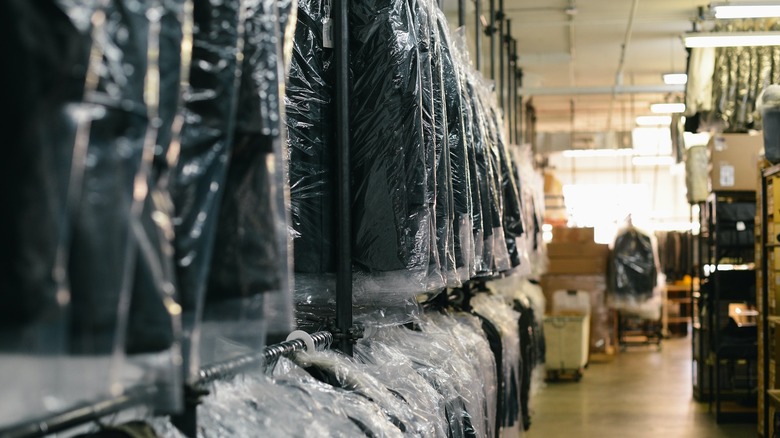What Is Green Dry Cleaning, And Why Should You Be Switching To It?
Picture yourself handing over clothes at your local dry cleaner with a clear conscience that they'll be spotless and you've made an eco-friendly choice. Welcome to the world of green dry cleaning. This innovation swaps out hazardous chemicals and processes associated with the traditional counterparts for more sustainable, non-toxic alternatives. Besides being environmentally friendly, organic dry cleaning offers enticing benefits, including reduced exposure to harmful substances, better garment care, and the satisfaction of contributing to a greener planet.
Let's talk about the elephant in the dry-cleaning room: PERC (short for perchloroethylene), the primary solvent used in conventional dry cleaning. PERC has been the preferred chemical for the industry since the 1930s, thanks to its remarkable stain-removal capabilities. However, it has a sinister side, like a crush who turns out to be not-so-charming after all. It is claimed that the solvent causes dizziness, poor balance, and headaches (via the New York State Department of Health), as well as potential eye and skin irritation. Additionally, the U.S. Environmental Protection Agency categorizes it as a probable cancer-causing agent. Scary, right? Unsurprisingly, California has set its sights on phasing out PERC from dry cleaning by 2023. Organic dry cleaning emerges as a much-needed breath of fresh air in an industry that has been gasping for change for too long.
Green dry cleaning methods
Under the umbrella of green dry cleaning exist various eco-friendly options to keep your garments fabulous without damaging Mother Earth. First, we have wet cleaning, which employs water and biodegradable detergents. Think of it as home laundering's sophisticated cousin, complete with computerized equipment and professional expertise to ensure the utmost care for delicate garments. As Noble co-founder, Courtney Noble, explained further to The Guardian, "The washed fabrics are placed in a specialized dryer equipped with moisture sensors to ensure the fibers are protected, dye bleeding is prevented, and fabrics do not shrink."
Next is the high-tech liquid carbon dioxide (CO2) cleaning. Picture a dry cleaning machine filled with clothes, the air gets sucked out, and gaseous and liquid CO2 is introduced to the chamber at high pressure to dissolve dirt and grease. Finally, the solution is channeled back into a reservoir tank for reuse. One of the CO2 dry cleaning drawbacks is the equipment's hefty $150,000 price tag, which doesn't quite add up for someone considering budget-friendly, non-toxic dry cleaning at home.
Another option is silicone-based cleaning, which uses a solvent called GreenEarth. Gentle on fabrics and void of hazardous waste, it's a good choice for eco-conscious fashionistas. Lastly, there's petroleum-based cleaning, which uses an organic solvent called DF-200. Wet cleaning and liquid CO2 are the most environmentally friendly among these methods. However, the production of DF-200 and GreenEarth has sparked some environmental concerns among scientists.
Why switch to green dry cleaning?
Switching to eco-friendly dry cleaning is like swapping out your wardrobe's supervillain for its superhero. However, that extends beyond saving yourself from the evil clutches of PERC and its toxic cronies. Thanks to biodegradable cleaning products, Mother Earth benefits from less water and soil contamination and diminished impact on the ozone layer.
But hold on; there's more. Green dry cleaning is also a boon for your cherished garments. By forgoing harsh dry cleaning solvents, you'll prolong the life of your clothes, maintaining their vibrant appearance and soft texture for an extended period. It's like having a time machine for your wardrobe — minus the risk of accidentally erasing your existence. And as if that wasn't enough, going green is kinder to your wallet as you'll save money on new clothes and cleaning supplies in the long run.
Hunting for the best green dry cleaners in your area? Carefully read customer reviews on Yelp and Google to gauge the service quality offered by potential candidates. You also want to investigate the processes, equipment, and agents used, ensuring they're environmentally friendly. Don't forget to double-check your care labels (some fabrics don't play well with dry cleaning) and highlight any stains or spots that demand extra attention. To wrap things up, verify if any post-cleaning guidelines apply to ensure your garments continue leading their best, eco-friendly lives.


